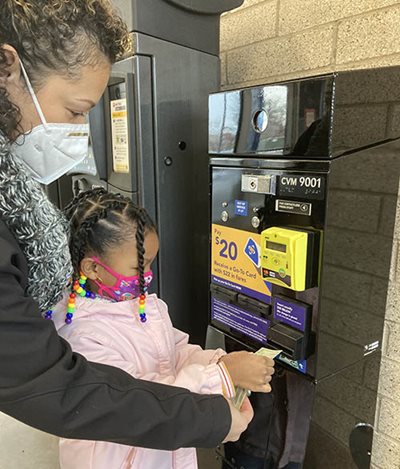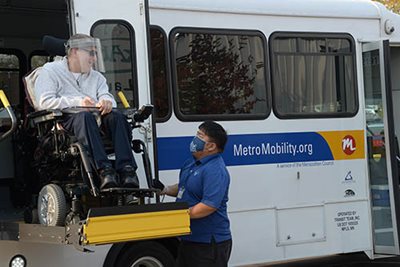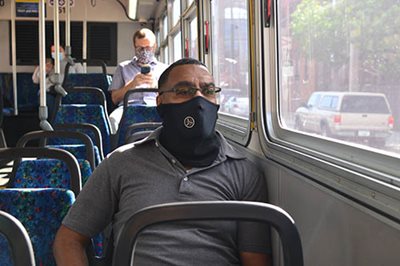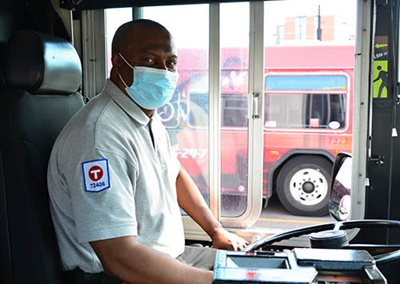 Almost exactly two years ago, COVID-19 upended the way we work, interact, and even move. As the world collectively tried to manage the impacts of the devastating virus by minimizing contact with others, transit ridership dropped precipitously — and the Metropolitan Council significantly reduced regional transit services.
Almost exactly two years ago, COVID-19 upended the way we work, interact, and even move. As the world collectively tried to manage the impacts of the devastating virus by minimizing contact with others, transit ridership dropped precipitously — and the Metropolitan Council significantly reduced regional transit services.
Slowly and surely, however, stay-at-home orders relaxed, more businesses reopened, and social gatherings returned in limited capacities. As a result, regional transit ridership began to rebound in 2021, offering hope for Met Council officials.
“Transit services are essential for people and a vital economy in the metro area,” said Metropolitan Council Chair Charlie Zelle. “Met Council ridership continues to increase as more people transition to daily activities outside their homes, including more people returning to school and the workplace. We’re cautiously optimistic that ridership levels will approach pre-pandemic levels.”
Met Council staff presented the full ridership report (PDF) at the February 14 Transportation Committee meeting.
An “apples to apples” comparison shows growth
Ridership for 2021 was down about 6.5% from the previous year, with commuter and express services most adversely affected. It’s important to note, however, that 2020 ridership numbers included nearly three months of peak pre-pandemic activity before ridership declined sharply by about 70%.

In the early stages of the pandemic between April and December of 2020, regional transit services averaged only about 2.3 million customers per month. Despite facing similar restrictions throughout 2021, transit services averaged almost three million monthly customers — nearly reaching four million passengers in October.
“It’s difficult to conduct year-over-year comparisons during a pandemic,” said Metro Transit Research & Analytics Manager Eric Lind. “Vaccinations were not widespread in early 2021. But as the number of vaccinations grew and schools and colleges returned to in-person learning, uncertainty lessened and ridership levels improved.”
An even closer look into comparative ridership data in 2020 and 2021 reveals a more pronounced uptick in the number of regional transit riders. All modes showed significant increase in ridership, leading to about 34% more customers using regional transit between April and December in 2021 compared to the same time period the previous year.
“We’ll have a more telling, apples-to-apples comparison story when we study transit ridership levels post-pandemic,” said Council Member and Transportation Committee Chair Deb Barber. “For now, the data tells a great story about how we’re responding to a world deeply affected by COVID. It provides critical context that we can use to match our services with our customers’ needs.”

Metro Mobility returns to core services
Metro Mobility — which transitioned to more normal operations in the second half of 2021 after providing food shelf delivery service and free rides to essential workers — showed incredible growth with a 54% ridership improvement between April and December. Ridership increased by 26% for the year, the largest increase of any Met Council transit service.
With more than 1.8 million total riders, Metro Mobility reached about 75% of pre-pandemic levels in 2021. A host of technology advancements designed to improve the customer booking and travel experience is expected to help solidify or even expand ridership levels moving forward.
Metro Mobility is a shared-ride public transportation service for certified riders who are unable to use regular bus or train routes because of a disability or health condition.
Bus ridership improves throughout the year
Overall bus ridership increased 23% year-over-year from April to December, with bus rapid transit coming closest to reaching pre-pandemic customer levels.
“Bus rapid transit is our most robust fixed-route service,” said Lind. “With a peak that’s about 70% of pre-COVID levels, it’s shown to be highly resilient and popular with customers along some of our busiest corridors.”
 As a result, the Met Council and Metro Transit continue to invest in expanding the rapid bus network throughout the metro area — including opening the METRO D Line, reaching the detailed design phase of the METRO B Line, and entering the development phase for the METRO Purple Line — to help customers reach their destinations faster and more conveniently.
As a result, the Met Council and Metro Transit continue to invest in expanding the rapid bus network throughout the metro area — including opening the METRO D Line, reaching the detailed design phase of the METRO B Line, and entering the development phase for the METRO Purple Line — to help customers reach their destinations faster and more conveniently.
While still lagging far behind 2019 ridership levels, light rail transit ridership improved in 2021. Similar to other modes of transit service, the biggest gains were between April and December where ridership improved by 59% over the same time period in 2020.
Additional growth curbed by emergence of COVID-19 variants
Met Council transit services typically experience an annual ridership decline during the holidays in November and December. After several consecutive months of growth in 2021, ridership plummeted in November — in part because of an increase in positive COVID-19 cases associated with its Delta and Omicron variants.
“Omicron had a direct impact on our service and ridership levels,” said Lind. “A sudden increase in positive COVID cases took drivers off the street because they were sick themselves or caring for loved ones who were sick.”
With recent studies showing a steady decline of Omicron cases, optimism for a more robust 2022 has returned.

Working to end the driver shortage
The worker shortage in the current economy is well documented — including in the transportation industry. Currently, Metro Transit is running 33 operators below optimal staffing levels, and Metro Mobility ended 2021 about 10% short of qualified drivers. Things looked even bleaker in January 2022 when Metro Transit reported about 300 cases of COVID. Fortunately, only 15 transit employees have tested positive in the first part of February.
"We can't provide the services we want to unless we have our full complement of operators," said Lind. “Otherwise, we have to reduce schedules and make trip cuts, which are both bad for ridership, obviously.”
Metro Transit and other Met Council contracted transportation services are currently running multiple promotions to offset attrition and attract driver prospects, including weekly hiring events and minimum hourly increases.
Learning from travel patterns
Customers took more than 38 million trips on Met Council transit services in 2021 — providing data experts with an incredible amount of information that can be used to study patterns, observe trends, and adjust services accordingly.
For example, recent commuting peaks at 7:00 a.m. and 3:00 p.m. revealed a ridership increase among students as metro-area high schools and colleges returned to in-person learning. In addition, Saint Paul schools recently reached out to Metro Transit to augment its bus services in response to its own bus driver staffing shortage.
Met Council officials also pointed to several major employers preparing return-to-work plans — even if initially in hybrid form including work-from-home days — as a potential boon for ridership levels in 2022 and beyond.
Each year the Met Council compiles data about transit ridership across the seven-county region, from Metro Transit’s bus and rail service to suburban providers’ local and express bus service, to more specialized services. Regional transit ridership combines the number of rides on all types of transit and by all the region’s transit providers.